Leiths' guide to making chicken, vegetable and fish stock
Kitchen masterclass: As part of our new collaboration with Leiths School of Food and Wine we are going back to basics. In the second part of the series, we show you how using the best quality ingredients, a good technique and slow, gentle simmering are the secrets to a fine stock
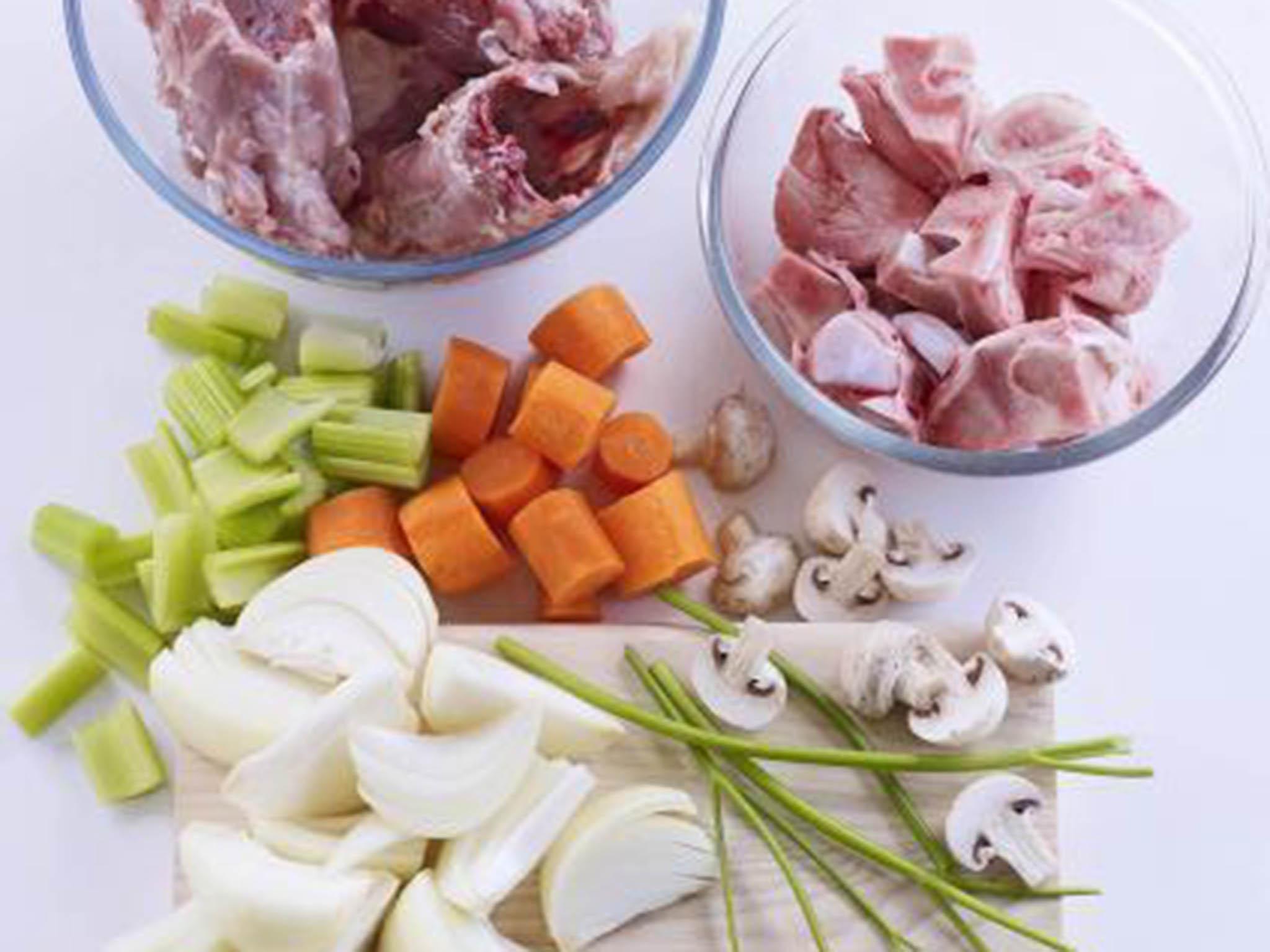
Your support helps us to tell the story
From reproductive rights to climate change to Big Tech, The Independent is on the ground when the story is developing. Whether it's investigating the financials of Elon Musk's pro-Trump PAC or producing our latest documentary, 'The A Word', which shines a light on the American women fighting for reproductive rights, we know how important it is to parse out the facts from the messaging.
At such a critical moment in US history, we need reporters on the ground. Your donation allows us to keep sending journalists to speak to both sides of the story.
The Independent is trusted by Americans across the entire political spectrum. And unlike many other quality news outlets, we choose not to lock Americans out of our reporting and analysis with paywalls. We believe quality journalism should be available to everyone, paid for by those who can afford it.
Your support makes all the difference.Using good-quality ingredients and a good technique will give you a high-quality stock. And as stock is a vital component in many recipes, the quality of the finished dish is often dependent upon the quality of the stock used. Slow, gentle simmering is the secret to a fine stock.
For a simple stock, also described as a ‘white stock’ the bones and vegetables are simmered together with appropriate flavouring herbs and vegetables to produce a delicately flavoured stock. Veal, poultry, fish, shell fish and vegetable stocks are most often ‘white stocks’.
For a brown stock, the bones and vegetables are browned before the stock is simmered. This results in a rich, strongly flavoured stock – useful for adding depth of flavour and colour to slow-cooked stews and braises. The browning process colours the bones and vegetables, and this colour is transferred to the stock on cooking.
Importantly, the cooking of the bones also renders much of the fat from the bones, making it easier to remove (see dépouiller, page 000). Brown stocks are most often made from red meats, but you can also make brown poultry, game, fish, shell fish and vegetable stocks. Care must be taken to avoid scorching the bones and vegetables, which will infuse the stick with a bitter, burnt flavour.
The cooking time for stocks varies enormously, from 30 minutes for fish, shell fish and vegetable stocks to 5–6 hours for brown beef, veal and lamb stocks. Fish and shell fish bones, and shells, impart a bitter flavour to stocks if they are cooked for too long. Vegetable stocks need very little cooking as the flavour is quickly transferred to the water and, since vegetables contain little fat, stocks are easily skimmed.
Salt: This should not be added when making stocks, as the stock may have to be reduced for use or storage and adding salt would result in over-seasoned dishes.
Water: When added to bones and vegetables water should always be cold. If hot water is used it melts the fat immediately, which can cloud the stock. When cold water is added during the simmering process (a technique known as dépouiller, see page 000), it helps to solidify fat, which makes it easier to skim from the top.
Ingredients for stock-making
Bones: Fresh bones are ideal for stock making; the leftover bones from a roast can be used, although the flavour will be weaker. Veal bones are generally preferred for stock-making as they impart a wonderful gelatinous quality and a clean, clear flavour.
Vegetables: Onion, carrot and celery are commonly used. Starchy vegetables, such as potatoes, which can make the stock cloudy, should be avoided. When preparing a stock for a particular recipe, other vegetables can be added, such as fennel for a sh stock, but it’s important that the flavour of the vegetables does not overwhelm the meat or fish flavour of the stock. Follow the guidelines in each recipe for the correct ratio of bones to vegetables, and consider the sweetness and the combination of the vegetables you are using: too many carrots can result in a very sweet stock, for example, and if you are adding leeks, then reduce the number of onions.
Aromatics: Parsley, thyme and bay are the herbs most often added to stocks, but if the stock is being made for a specific recipe, then other herbs might be included. Generally, only the stalks of soft herbs such as parsley are used, as too many leaves can discolour the stock. Peppercorns complete the aromatic additions to classic stocks, but in Asian cooking, lemongrass, garlic, ginger and galangal are sometimes added.
Understanding more about stock
Removing fat and impurities: Because raw bones are used in a ‘white stock’, all the fat still left on the bones melts as the stock comes up to the boil, and must be skimmed off. The dépouiller (see below) and skimming process for this type of stock is generally much lengthier than for brown stock (where the bones are roasted rst), and as much as a quarter of the liquid can
be skimmed from the pot to help in the removal of the fat and scum. Often a double dépouiller is needed, with any liquid removed replaced with cold water.
Dépouiller: This technique involves splashing a large amount of cold water into a stock (about 500ml for a 10-litre stockpot), generally as it is coming up to the boil. This helps to lower the temperature and most importantly to solidify fat and scum, lifting it to the surface ready for skimming. You can also dépouiller during the simmering process if there is a lot of fat and scum present.
Glace: A very well reduced stock is called a glace (or glace de viande or fish glaze). It has a very concentrated flavour and is used sparingly. A sauce or dish will sometimes need a glace or glaze to be added towards the end of cooking, such as a glace de viande for a béarnaise sauce. Sometimes it is added to a recipe at the beginning, such as a fish glaze used in the reduction for a fish beurre blanc. Take care when reducing stock for a glace that it is not over-reduced to the point where it catches and begins to burn, which will give it a bitter flavour; a glace should be very sticky to the touch.
Storing stock: It is best to store frozen stock in small quantities so that only the required amount need be defrosted for use. Ice-cube trays are suitable, as often only a very small amount of stock is needed to ‘lift’ a dish or sauce. Stocks cannot be refrigerated or frozen before they have cooled, so start making stocks that call for lengthy cooking early on in the day. If you need to hasten cooling, add a jug of ice to the stock to lower the temperature.
When reheating stock the following day, it must be brought back up to the boil before the temperature is turned down and the stock is simmered again. Don’t be tempted to keep adding ingredients as this can present food safety issues if the stock is not brought properly back up the boil after each addition
Brown chicken and veal stock
Makes about 1 litre
(in a 10-litre stockpot)
2kg raw chicken carcasses 1kg veal bones
3 onions
2 carrots
4 celery sticks
3 tbsp vegetable oil
2 tsp tomato purée
Handful of parsley stalks
Few thyme sprigs
2 bay leaves
Few black peppercorns
Handful of button mushrooms
Heat the oven to 200oC/gas mark 6. Trim any excess fat from the chicken carcasses and cut them in half. Place the chicken carcasses and veal bones in a large roasting tin and roast in the oven, turning occasionally to ensure even browning, for about 50–60 minutes or until golden brown.
Meanwhile, cut the onions in half; the skin can be left on. Peel the carrots and cut them and the celery into large chunks. Heat the oil in a saucepan and brown the onions, carrots and celery over a medium to high heat. Although the vegetables can be browned in the oven, it is more efficient and more colour is achieved if they are browned on the hob.
Once the vegetables have browned, add the tomato purée, stir and caramelise the tomato purée around the vegetables for 2–3 minutes. Transfer the vegetables and browned bones to a tall stockpot and add enough cold water to cover. Place on a medium to high heat and bring slowly to the boil. Once boiling, immediately turn the heat down and dépouiller (see 000).
Now skim off the fat and scum that will have risen to the surface. Add the parsley, thyme, bay leaves and peppercorns, then the mushrooms, which will absorb some surface fat as well as add flavour.
Simmer the stock very gently, uncovered, for 4–5 hours, skimming occasionally. If liquid is removed during the skimming process, replace it with cold water. The bones and vegetables should always be covered with liquid to ensure maximum flavour extraction. Strain the stock carefully through a fine sieve into a clean pan and reduce to the required concentration of flavour for use. Alternatively, to store the stock, continue to reduce it until slightly ‘sticky’ when tested between thumb and finger. The stock can be cooled and refrigerated or frozen, then kept for up to 3 days in the fridge, and up to 3 months in the freezer.
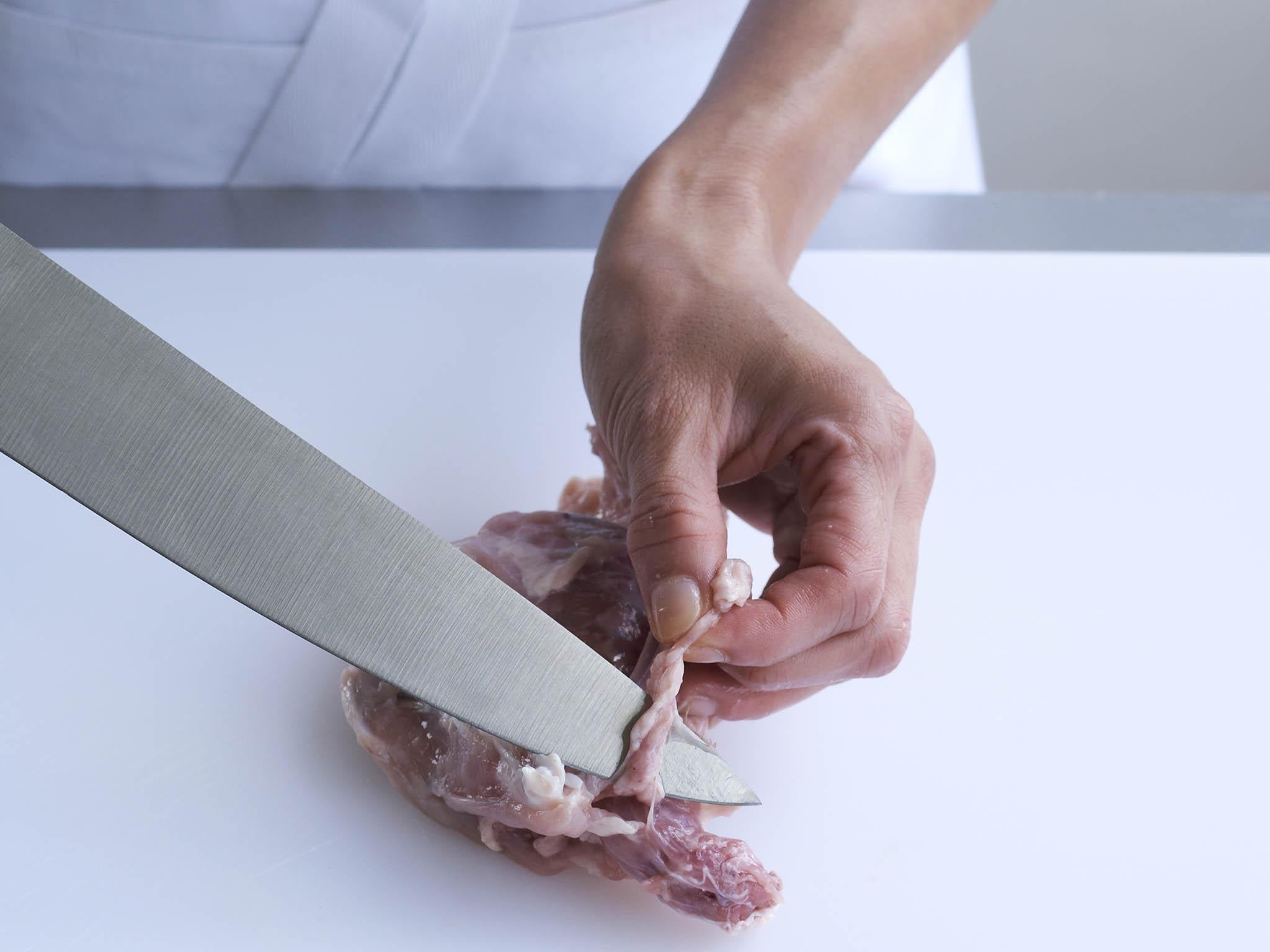

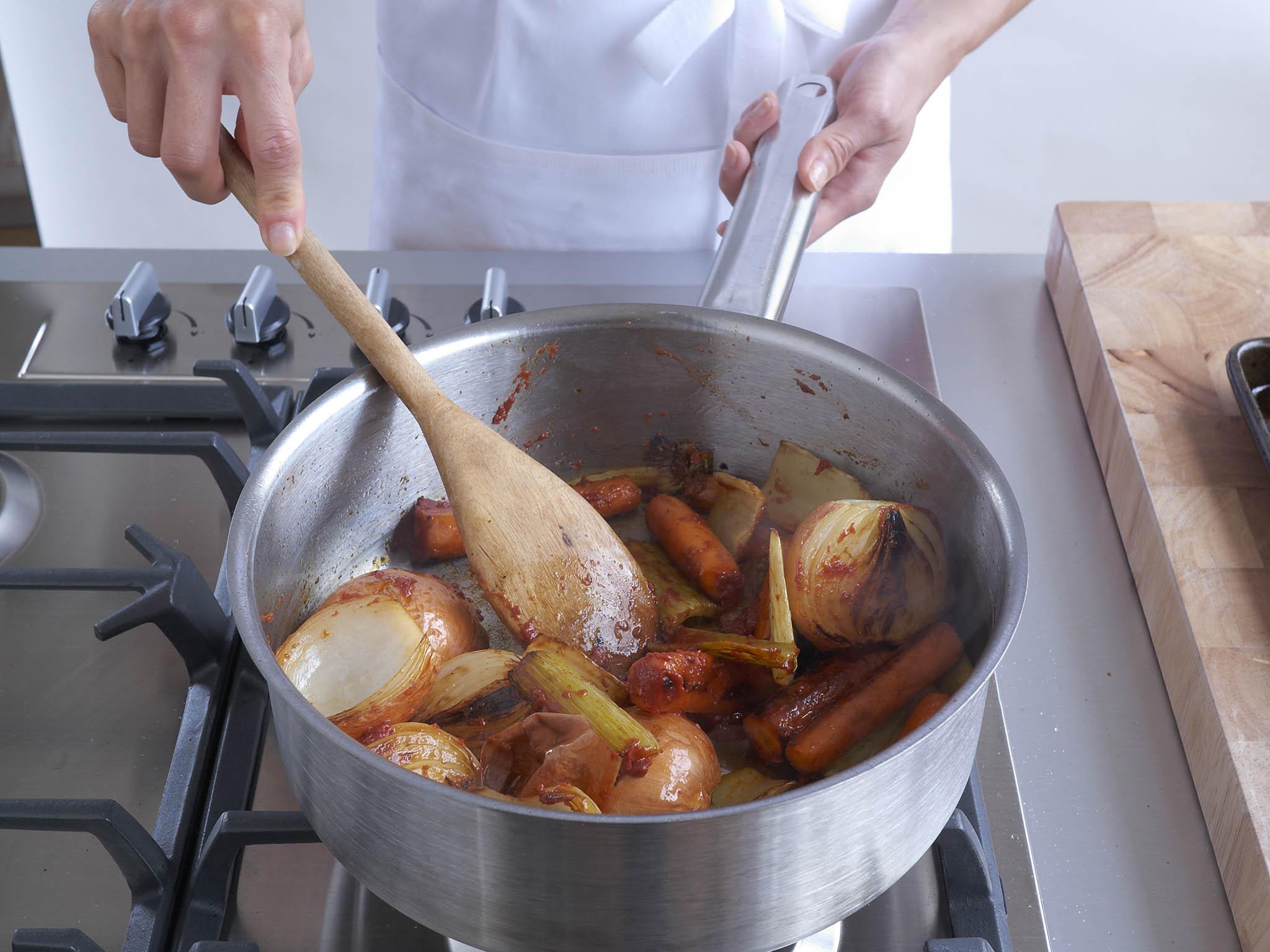

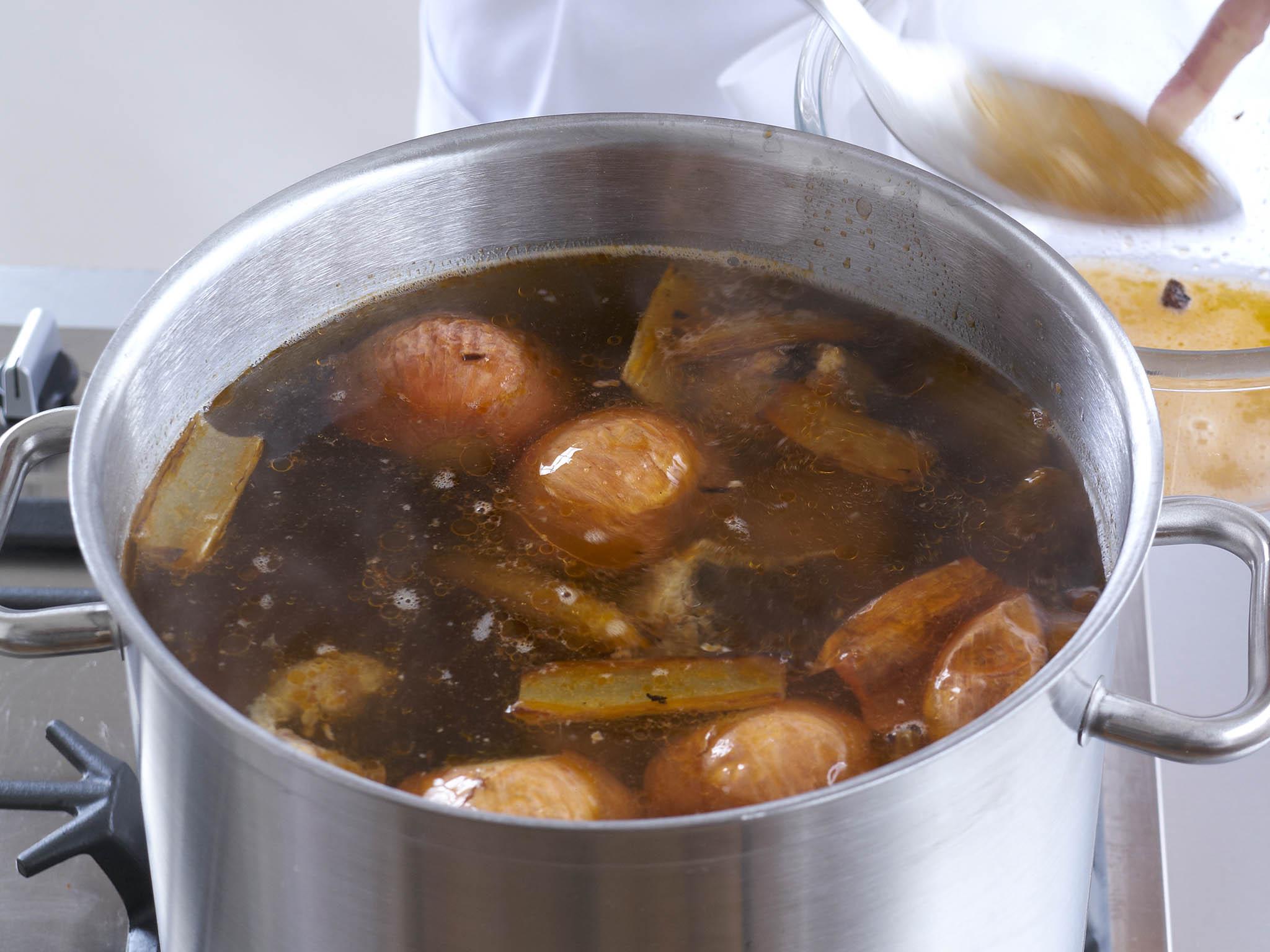
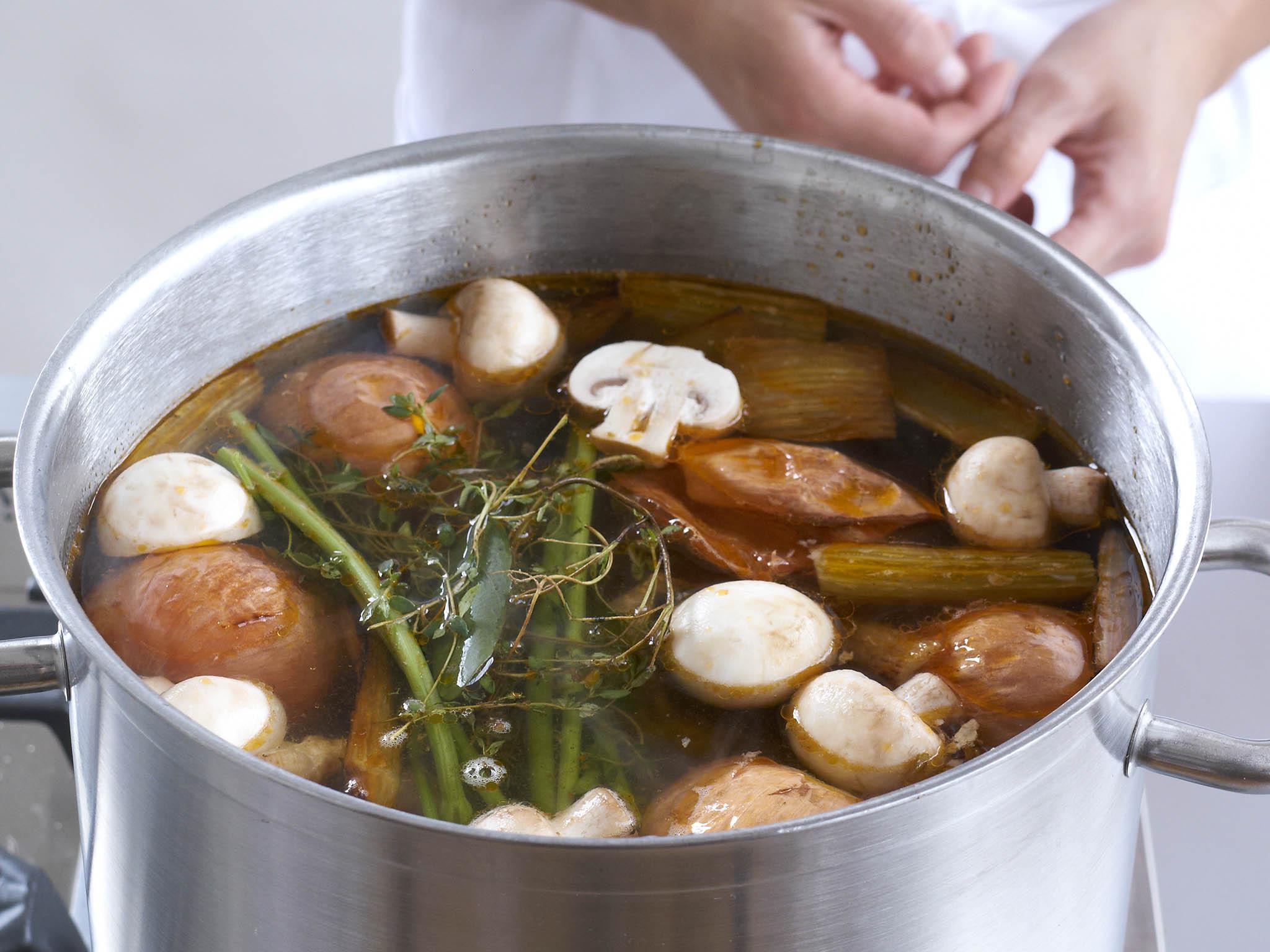
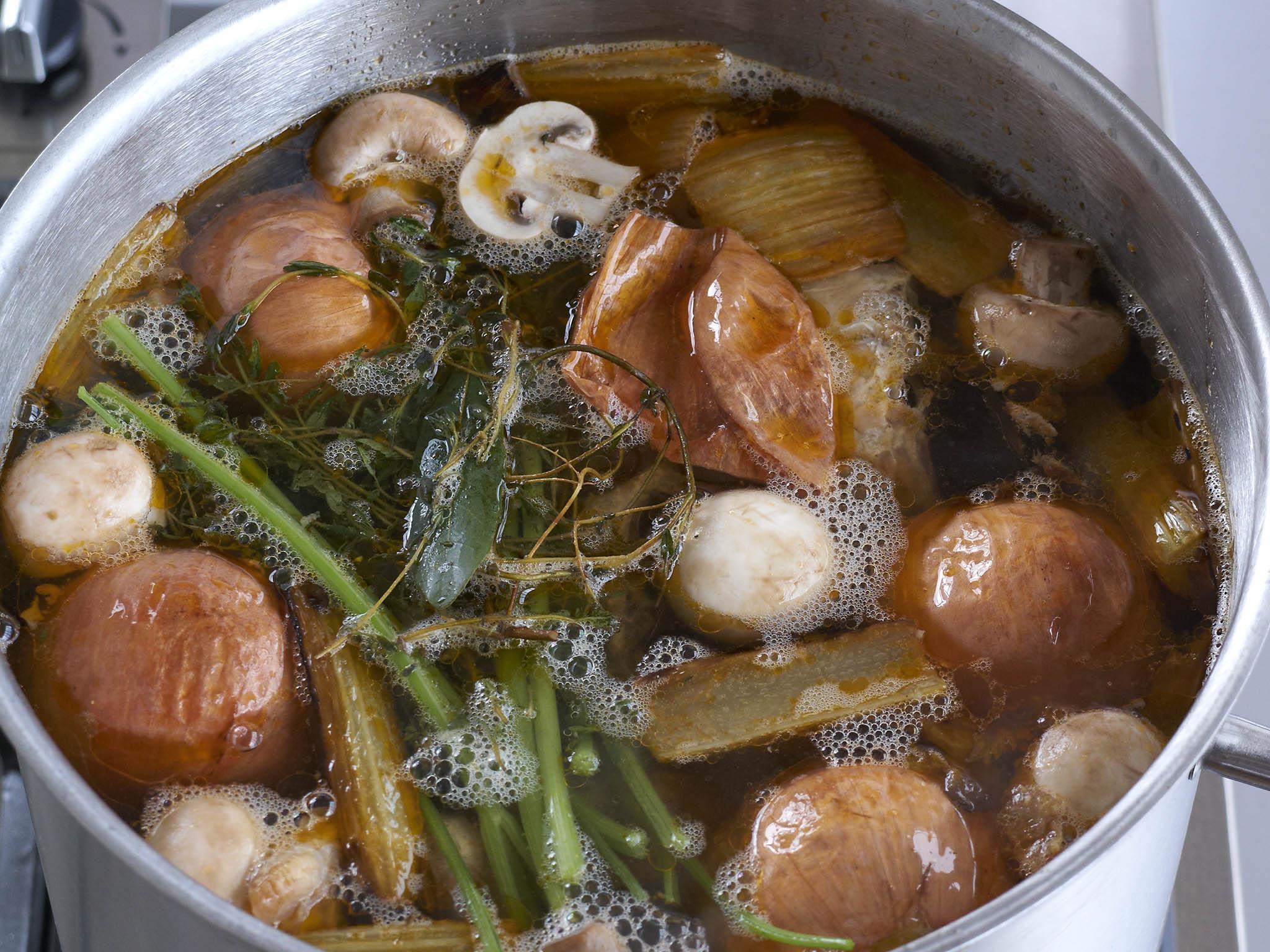
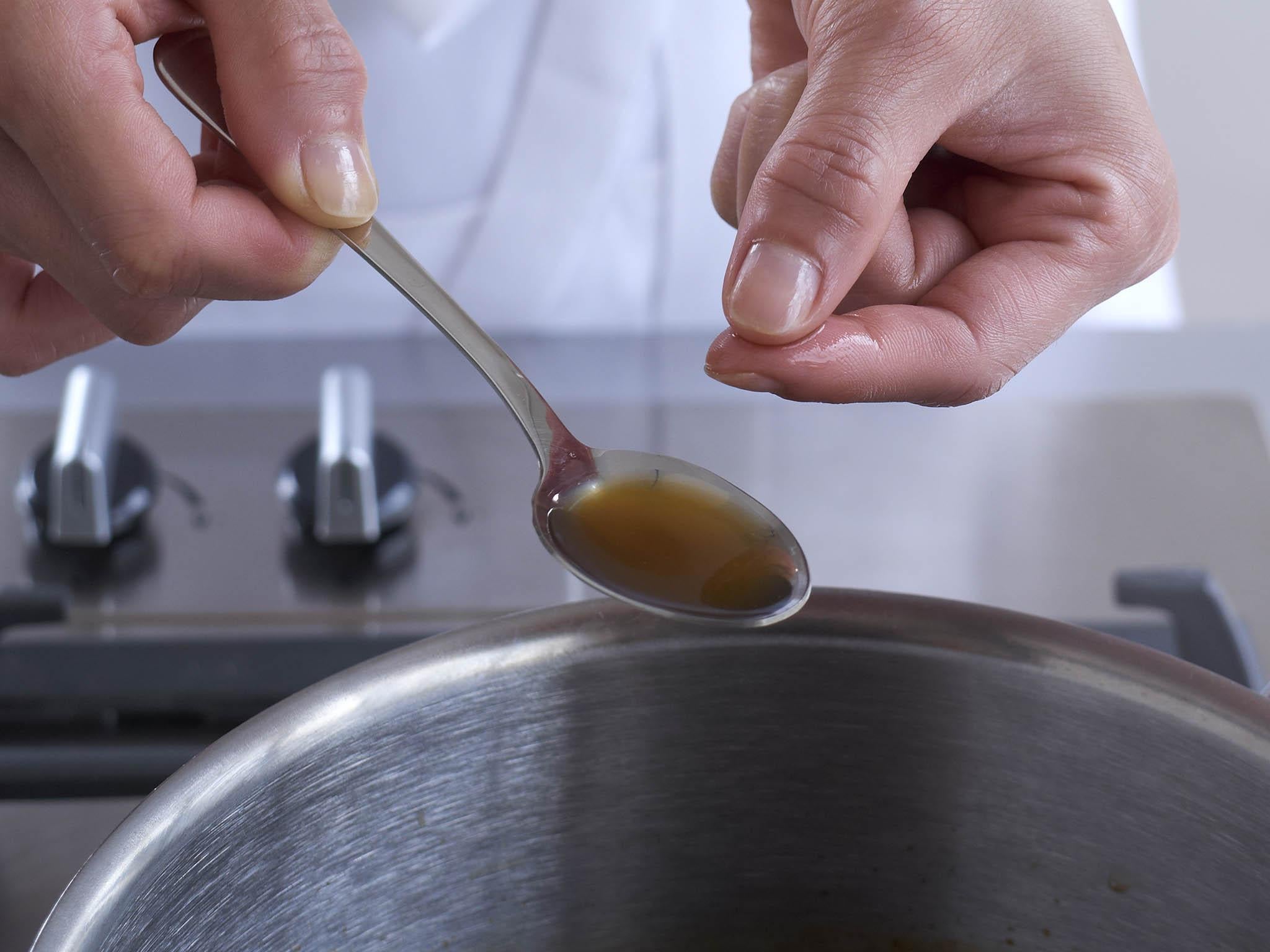
Variations
Brown beef or lamb stock: Beef or lamb bones can be substituted for the chicken bones in the main recipe. Cook the stock for a little longer, 5–6 hours, to allow as much extraction of flavour as possible; this will take longer than chicken because of the density of the bones.
Brown game stock: Substitute any feathered game bones for the chicken. The flavour can be strong, so for a lighter game stock cook it for less time.
To make glace de viande or meat glaze
To ensure you always have some glace to hand, reduce a sizeable amount of stock, such as 1 litre, and freeze what you don’t need to use straight away in ice cube trays.
Put brown chicken and veal stock in a deep frying pan or a saucepan and simmer until the stock is very well reduced. When a little is tested between your thumb and fingertip it will feel very sticky (like Vaseline). It will taste too strong, as it will be diluted in the final sauce. Take care not to reduce it any further as the natural sugars in the stock will continue to caramelise and the glaze will burn. Strain it into a container. Once cool the glaze will be like a firm jelly.
Fish stock
Makes about 1 litre (in a 10-litre stockpot)
3kg fish bones, ideally from flat white fish (such as sole, brill or plaice)
1 onion
2 carrots
2 leeks
4 celery sticks
½ fennel bulb
Handful of parsley stalks
Few thyme sprigs
2 bay leaves
A few black peppercorns
Rinse the fish bones under cold water and cut off the heads from some of the frames (too many fish heads can cause bitterness in a stock). Cut the frames into large pieces, put into a tall stockpot and cover with cold water. Place on a medium to high heat and bring slowly to the boil. Meanwhile, peel the onion, carrots and leeks and cut them and the celery and fennel into thick slices.
As soon as the stock comes to the boil, turn the heat down and dépouiller (see page 000). Skim off the fat and scum that will have risen to the surface until the stock is as clear as possible. Add the vegetables and aromatics to the stockpot, and more cold water to cover the bones and vegetables. Simmer very gently for 30 minutes, skimming occasionally.
Strain the stock carefully through a fine sieve into a clean pan. Reduce to the required flavour concentration for use. Alternatively, to store the stock. continue to reduce it until a stronger concentration is achieved. The stock can be cooled and refrigerated or frozen, then kept for up to 3 days in the fridge or 3 months in the freezer.
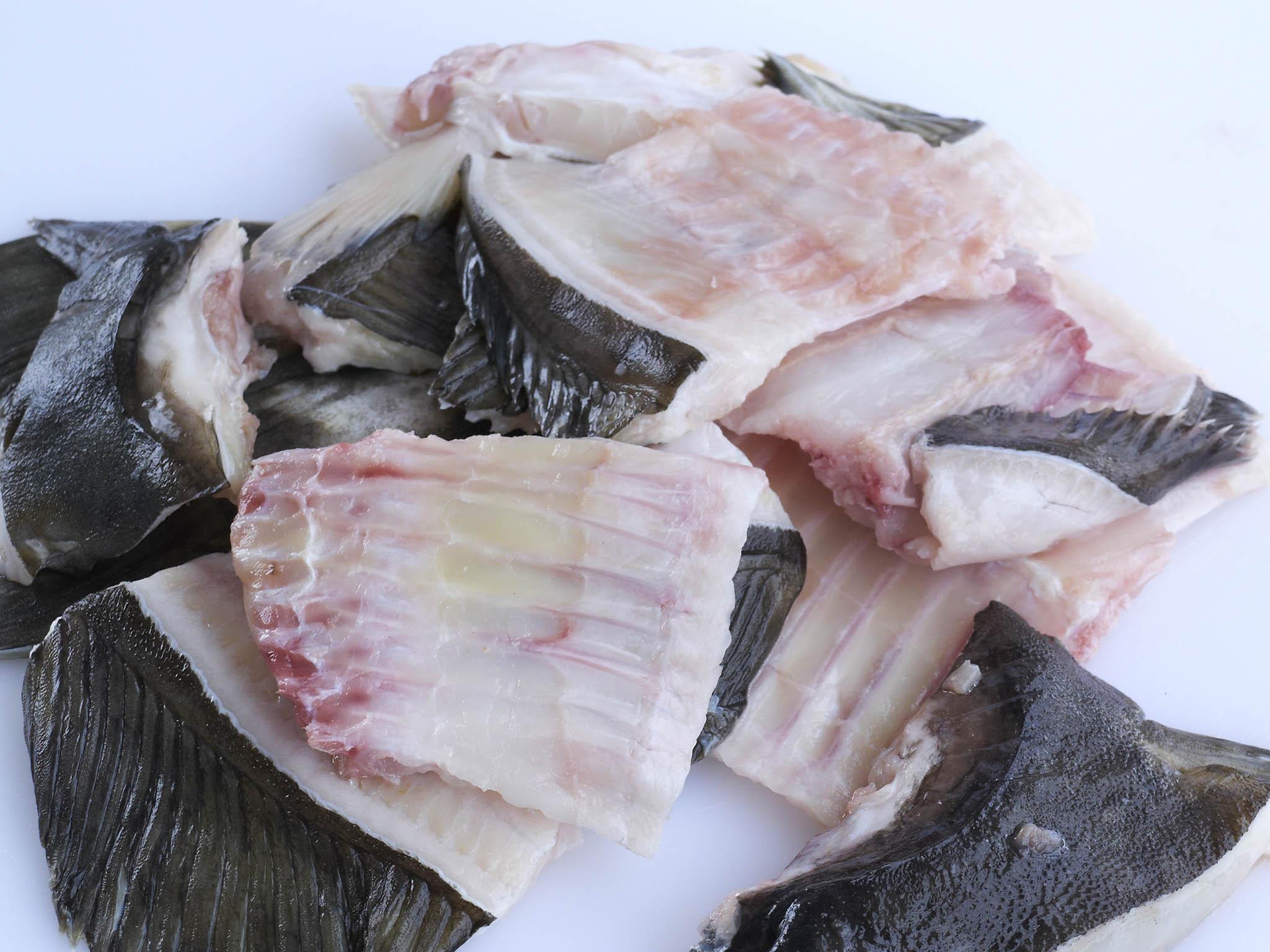
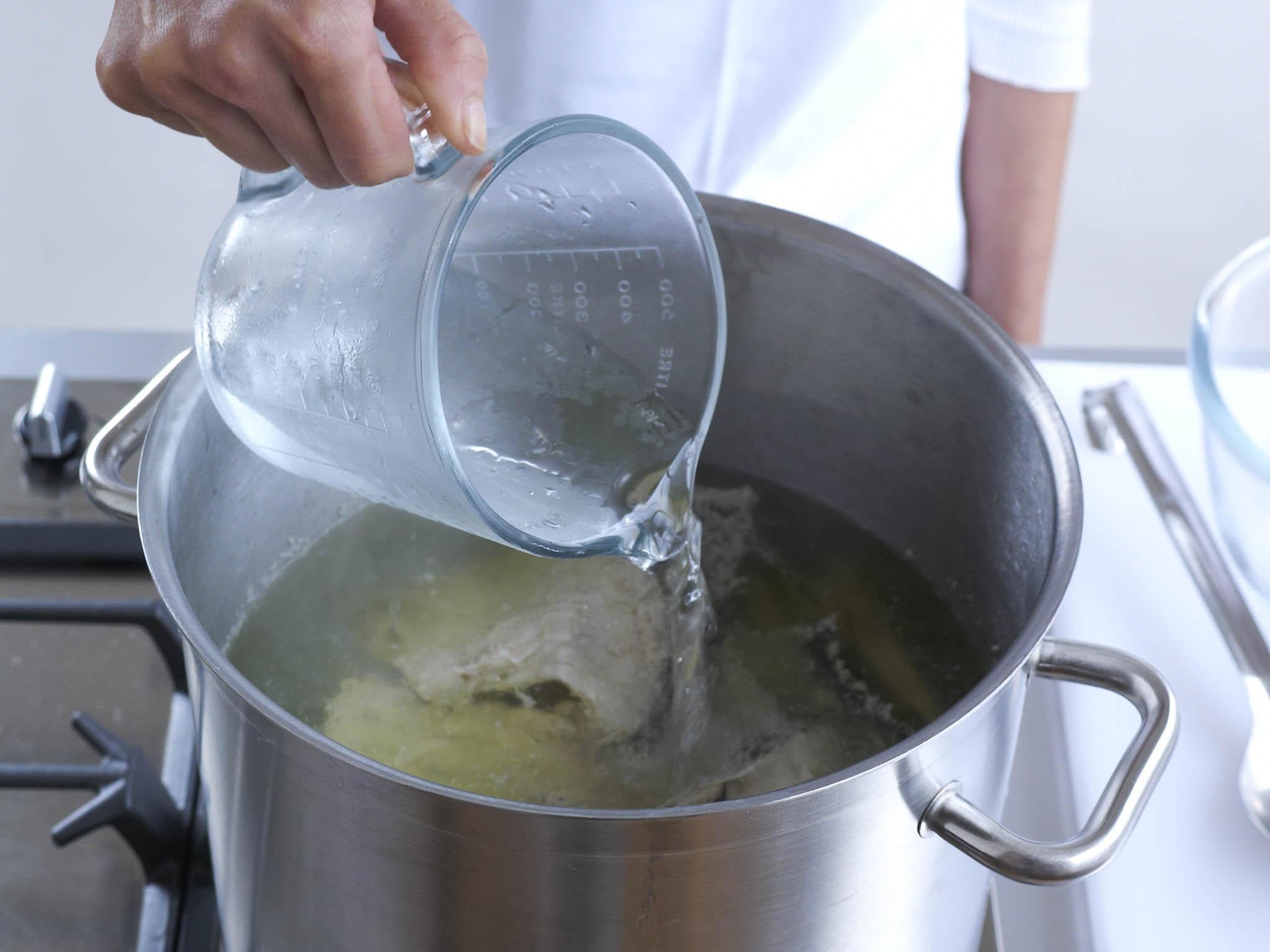
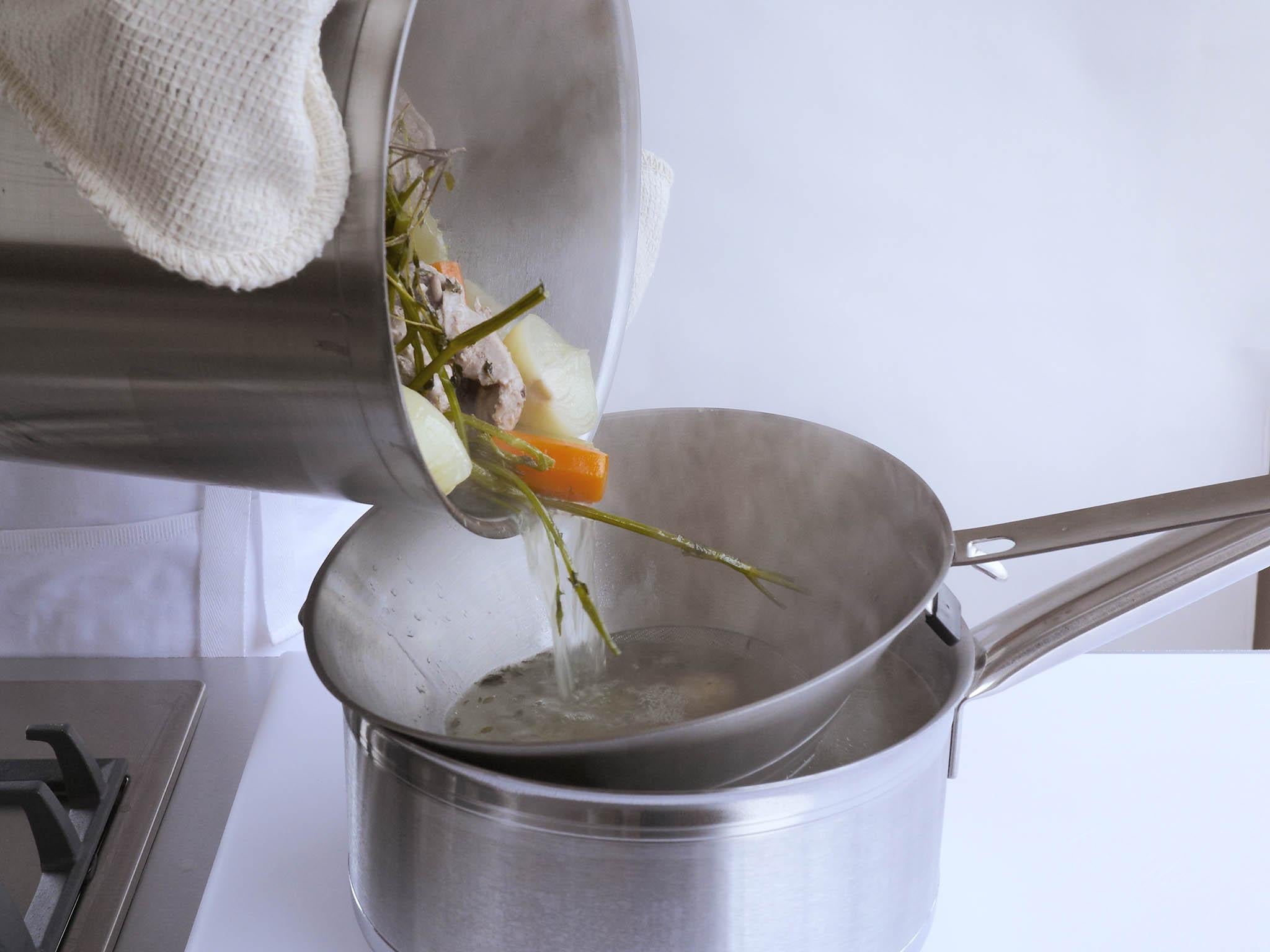
Variations: Shellfish stock Proceed as for white fish stock, but substitute the fish bones for the same weight of crustacean shells, such as prawn, lobster and crab.
Brown fish/shellfish stock It is difficult to brown fish and shellfish bones, so brown just the vegetables lightly in 2–3 tbsp vegetable oil, then add them to the stock. A little more skimming will be required to remove the oil used.
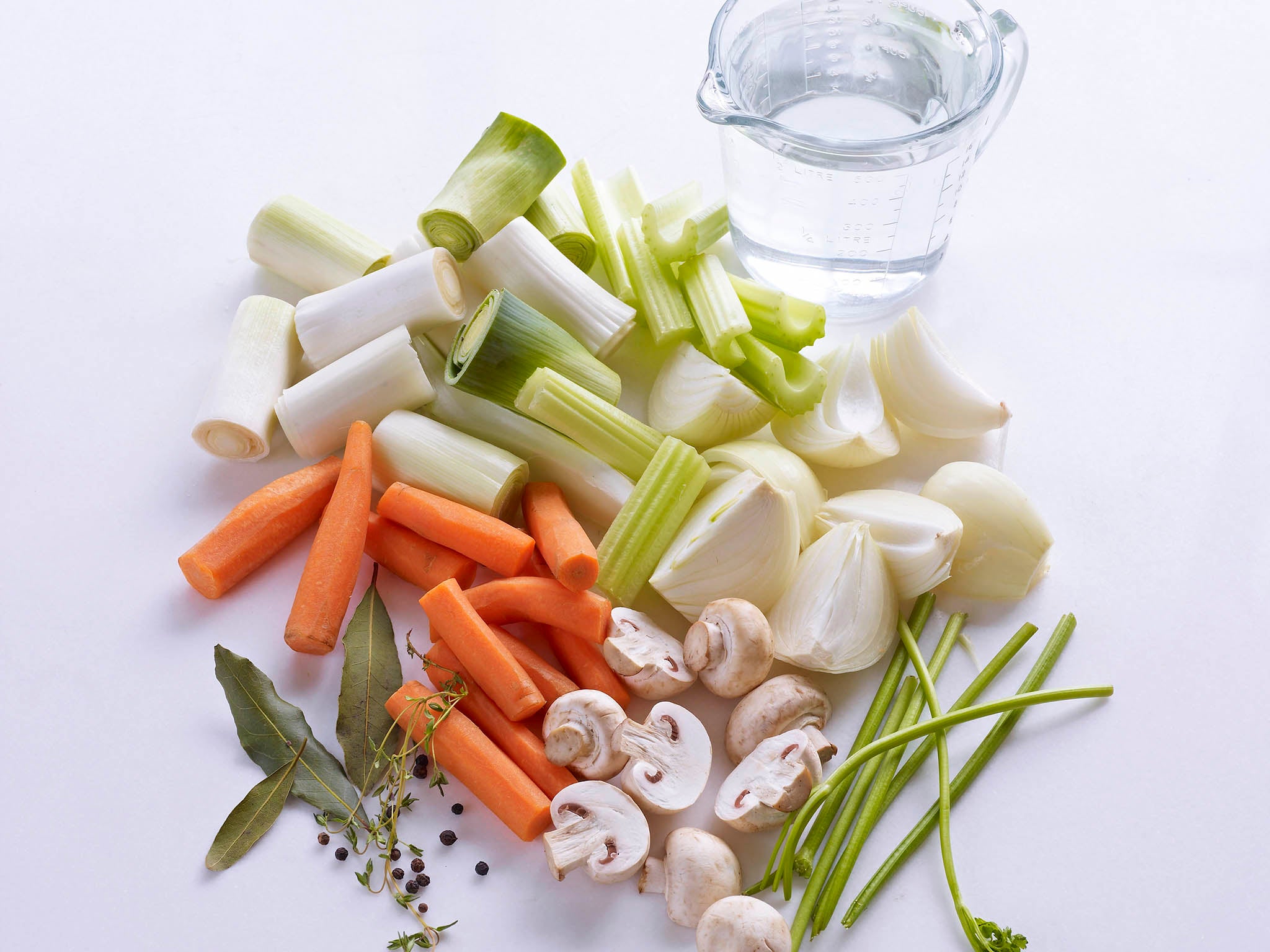
Vegetable stock
Makes about 1 litre (in a 10-litre stockpot)
6 onions
6 carrots
1 head of celery
4 leeks
Handful of parsley stalks
Few thyme sprigs
2 bay leaves
Few black peppercorns
Wash and peel the vegetables, as appropriate to each, and cut into large chunks. Place in a tall stockpot with the aromatics and cover with cold water. Place on a medium to high heat and bring slowly to a simmer. Reduce the heat and cook gently for 30 minutes, skimming as necessary. No fat is involved in making vegetable stock, so it is only scum that might rise to the surface.
Strain the stock carefully through a fine sieve and reduce to the required flavour concentration for use. Alternatively, to store the stock, continue to reduce it until a stronger concentration is achieved. The stock can be cooled and refrigerated or frozen then kept in the fridge for up to 3 days or the freezer for up to 6 months.
Variation: Brown vegetable stock Brown the vegetables in 2–3 tbsp vegetable oil until a deep golden colour all over. Make sure they brown rather than sweat or the stock will be too sweet, but also that they are not scorched, which will impart a bitter taste. After browning, add 2 tsp tomato purée to the vegetables and caramelise for 2–3 minutes before adding to the stockpot. A little more skimming will be required than for the main recipe, to remove the oil used to brown the vegetables
Leiths How to Cook by Leiths School of Food and Wine (Quadrille, £30) Photography © Peter Cassidy
Join our commenting forum
Join thought-provoking conversations, follow other Independent readers and see their replies
Comments